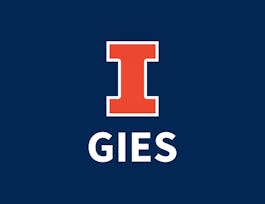In this course, you will learn about a well-researched tool for building a more equitable economy: “employee ownership.” You will learn what it is, how it differs from traditional business ownership models, and the forms it can take. You will learn how employee ownership can share wealth and profits with employees--while making businesses more productive. You will learn what the research shows about the benefits of this tool for employees, retiring business owners, and the economy.



Our Share: Employee Ownership as a Wealth Sharing Tool


Instructors: Adria Scharf, PhD
Sponsored by BrightStar Care
Recommended experience
What you'll learn
How businesses can be designed to share ownership and profits with employees.
New options for business succession.
Facts about wealth inequality.
Skills you'll gain
- Organizational Structure
- Entrepreneurship
- Diversity and Inclusion
- Economics, Policy, and Social Studies
- Social Sciences
- Business Operations
- People Management
- Organizational Leadership
- Succession Planning
- Compensation and Benefits
- Business
- Leadership and Management
- Human Resources
- Environmental Social And Corporate Governance (ESG)
- Diversity Equity and Inclusion Initiatives
- Compensation Management
- Employee Engagement
- Organizational Development
- Business Management
- Socioeconomics
Details to know

Add to your LinkedIn profile
9 assignments
See how employees at top companies are mastering in-demand skills


Earn a career certificate
Add this credential to your LinkedIn profile, resume, or CV
Share it on social media and in your performance review

There are 4 modules in this course
In this course, you will learn about a well-researched tool for building a more equitable economy: “employee ownership.” You will learn what employee ownership is, how it differs from traditional business ownership models, and the forms it can take. You will learn how employee ownership can share wealth and profits with employees--while making businesses more productive. In the first week of the course, you will learn about how businesses are commonly owned. By the end of the first week, you will understand how employee ownership differs from common ownership models...and you will be able to name three relevant economic trends. Find links to more resources by clicking "Download" below the videos in this lesson. Let's get started.
What's included
12 videos5 readings3 assignments2 discussion prompts
Next we look more closely at four specific types of employee ownership: the Employee Stock Ownership Plan or ESOP, the worker cooperative, equity compensation, and the employee ownership trust. We will examine how these types of employee ownership work, how they differ from one another, and their prevalence. Then we will dive deep into understanding the historic roots of modern employee ownership. By the end of this module, you will have acquired a basic understanding of four key types of employee ownership. You will be able to visualize how several companies are successfully sharing ownership with employees. And you will understand how some ideas supporting employee ownership and profit-sharing trace back to the earliest founding of the United States, while the cooperative tradition has roots in Black and marginalized community experiences. Throughout this module, we will learn from several different scholars and experts.
What's included
8 videos4 readings2 assignments
Scholars have generated an enormous amount of evidence suggesting that employee ownership can strengthen firm performance, survival, and job stability, improve employee economic well-being, and address wealth inequality. In this module, you will learn some of the most important research findings, findings that are relevant to real-world practice. By the end of this module, you will understand several important takeaways from the research.
What's included
9 videos3 readings2 assignments
Welcome to the final part of the course. This section introduces basic information about implementing two forms of employee ownership, the ESOP and the worker cooperative. The two company founders who you met earlier will share more about how they adopted employee ownership. Tracy Till is co-founder of a company that became an ESOP. Jarret Schlaff co-founded a worker cooperative. Both will tell you why their business became employee owned, and how they and their colleagues did it. Both will describe important steps in the process and lessons they learned along the way. We have included links to optional, supplemental, instructional resources. By the end of this portion of the course, you will know much more about how one business owner sold the business she co-owned to employees through an ESOP, and how a different organization became a worker cooperative. You will take away a basic understanding of the key steps in the process, knowledge of important questions to ask, and resources for finding more detailed guidance.
What's included
10 videos2 readings2 assignments1 peer review1 discussion prompt
Why people choose Coursera for their career




Recommended if you're interested in Business

Board Infinity

University of Michigan

University of Illinois Urbana-Champaign

Lund University

Open new doors with Coursera Plus
Unlimited access to 10,000+ world-class courses, hands-on projects, and job-ready certificate programs - all included in your subscription
Advance your career with an online degree
Earn a degree from world-class universities - 100% online
Join over 3,400 global companies that choose Coursera for Business
Upskill your employees to excel in the digital economy


